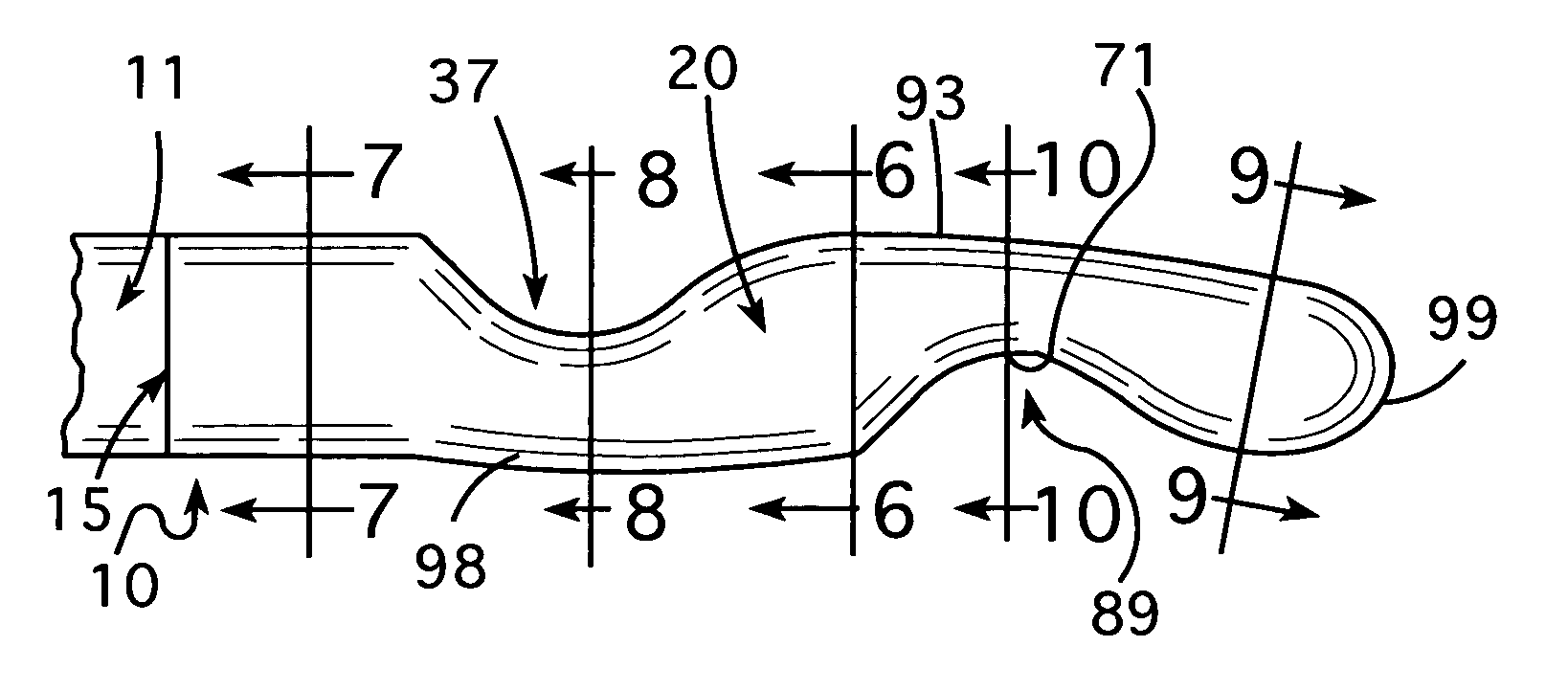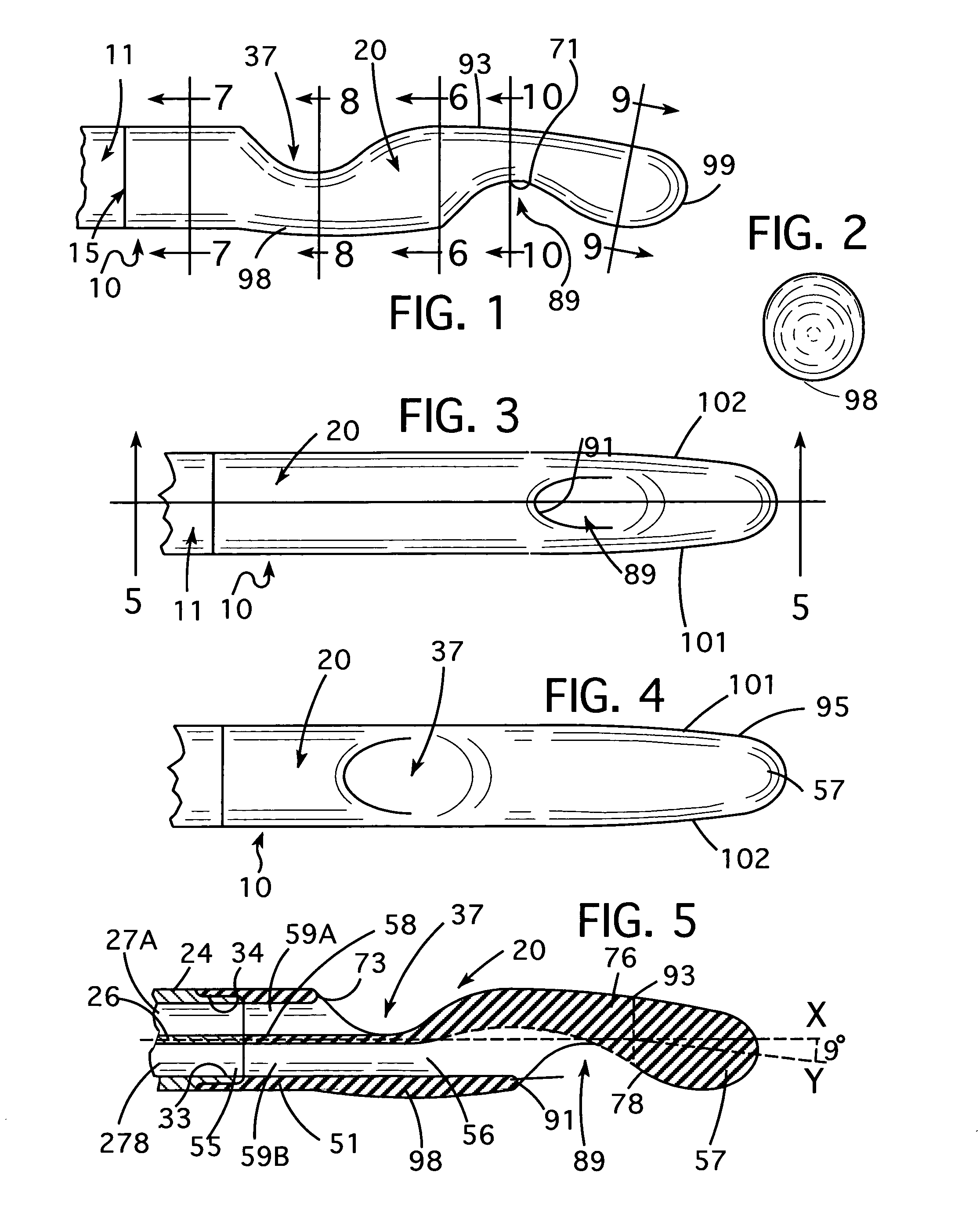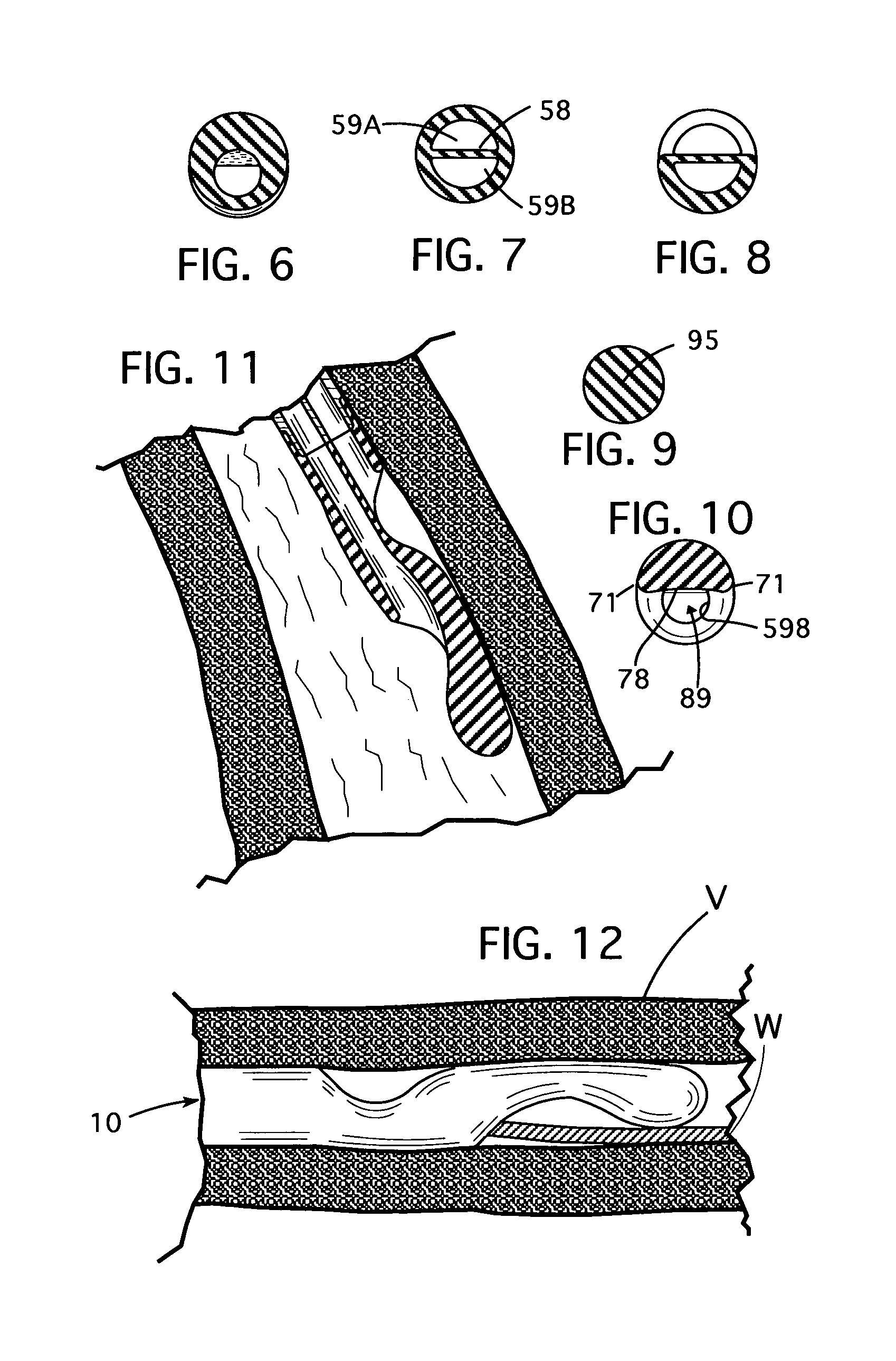Catheter
a catheter and catheter tip technology, applied in the field of catheters, can solve the problems of port occlusion, build-up of fibrin on the catheter tip, damage to the vein lining, etc., and achieve the effect of reducing the exit flow velocity of venous blood
- Summary
- Abstract
- Description
- Claims
- Application Information
AI Technical Summary
Benefits of technology
Problems solved by technology
Method used
Image
Examples
Embodiment Construction
[0074]Referring now to the drawings and particularly to FIGS. 1–10, a dual lumen catheter embodying features of a first form of the invention is illustrated generally at 10. The catheter 10 comprises a cylindrical tube 11 (only partially shown) having a distal end 15. A bolus 20 is attached to the distal end 15 of the tube 11.
[0075]The tube 11 illustrated is a standard 14.5 French tube formed of a plastic material such silicone or polyurethane. In this embodiment the tube 11 shown is formed of MED-4700 silicone and is manufactured by NuSil Technologies. The tube 11 is formed by extruding a tubular body 24 with a generally cylindrical wall 25 and a septum 26. The 14.5 French tube 11 has an O.D. of 0.192 inches.
[0076]The tube body 24 is divided by the septum 26 into two identical D-shape lumens 27A and 27B extending through the tube body along its length. The lumen 27A is normally an arterial lumen and the lumen 27B is normally a venous lumen. Each lumen 27A and 27B has a D-shape cros...
PUM
 Login to View More
Login to View More Abstract
Description
Claims
Application Information
 Login to View More
Login to View More - R&D
- Intellectual Property
- Life Sciences
- Materials
- Tech Scout
- Unparalleled Data Quality
- Higher Quality Content
- 60% Fewer Hallucinations
Browse by: Latest US Patents, China's latest patents, Technical Efficacy Thesaurus, Application Domain, Technology Topic, Popular Technical Reports.
© 2025 PatSnap. All rights reserved.Legal|Privacy policy|Modern Slavery Act Transparency Statement|Sitemap|About US| Contact US: help@patsnap.com



